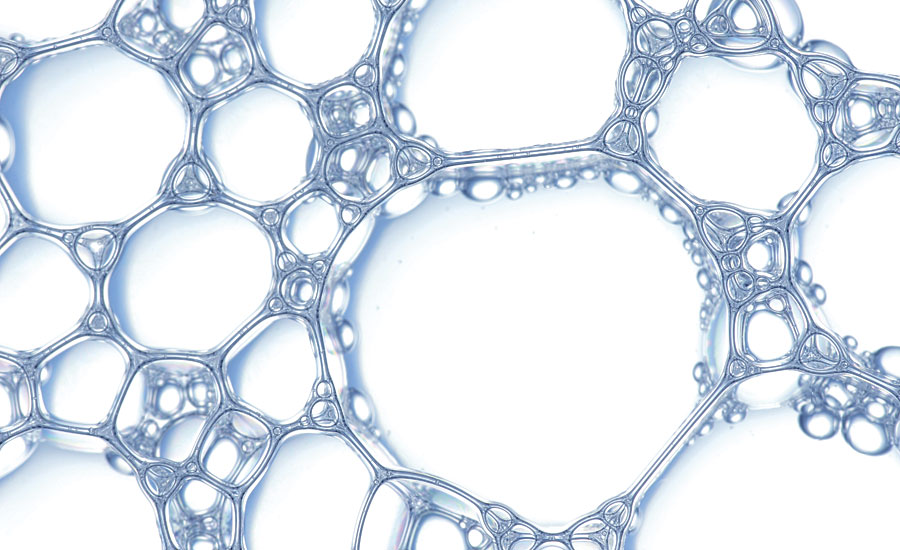Discover the Top Benefits of Making Use Of Defoamers in Industrial Processes
The application of defoamers in industrial procedures offers an array of compelling benefits that can improve functional performance and product top quality. By efficiently controlling foam production, these agents not only enhance product circulation but additionally contribute to significant expense reductions and enhanced sustainability. The effects of taking on defoamers might be more profound than at first viewed.
Boosted Refine Performance
Maximizing commercial procedures frequently involves dealing with lathering problems, which can hinder functional performance. Foam formation can hinder the appropriate performance of tools, minimize the reliable application of sources, and make complex the surveillance of crucial specifications. By executing defoamers, industries can efficiently mitigate these issues, leading to structured procedures and enhanced efficiency.
Defoamers work by destabilizing the foam structure, enabling quick collapse and considerable reduction in foam volume. This activity not only enhances the circulation of products with equipment, such as activators, mixers, and pipes, however also decreases disturbances brought on by foam overflow. Equipment downtime is lowered, enabling for a more reliable and constant production process.
Additionally, the usage of defoamers can bring about decreased power usage. With much less foam to handle, pumps and compressors can run much more efficiently, leading to lower operational prices and a general renovation in process throughput. Ultimately, the tactical use of defoamers not just addresses prompt foaming obstacles but also adds to an extra efficient industrial ecosystem, promoting an affordable advantage in a requiring market.
Improved Item Quality
The combination of defoamers in commercial processes plays an important role in improving item quality. By efficiently regulating foam development, defoamers contribute to the consistency and harmony of final items. Excessive foam can result in oygenation, which adversely impacts the texture and stability of formulas, specifically in industries such as food and beverages, finishings, and drugs.

Moreover, defoamers promote much better mixing and diffusion of components, leading to homogeneity in solutions. This is vital in applications where accurate ingredient proportions are crucial for efficiency and security. Additionally, the removal of foam can decrease the threat of contamination during manufacturing, additional safeguarding item integrity.
Eventually, by boosting product top quality, defoamers not only boost consumer contentment however also strengthen brand online reputation. Their function in keeping premium criteria underscores their value in modern commercial processes.
Expense Decrease Benefits
Applying defoamers in industrial processes can bring about significant expense decrease benefits. By successfully regulating foam formation, defoamers reduce item loss throughout manufacturing, thus enhancing product use. This reduction in waste converts straight right into lower resources expenses, improving total functional efficiency.
Furthermore, making use of defoamers can reduce power intake. Excessive foam can hinder equipment performance, causing boosted power needs her response to keep manufacturing degrees. By mitigating foam, defoamers help with smoother operations, enabling machinery to run much more effectively and minimizing power expenditures.

Additionally, defoamers Continued can shorten handling times. Foam can develop extra difficulties that extend production cycles. By utilizing defoamers, industries can streamline their processes, leading to faster turnaround times and boosted throughput. This performance not just speeds up production but additionally permits business to satisfy market demands much more swiftly.

Environmental Effect Reduction
In commercial procedures, the use of defoamers plays a vital duty in mitigating environmental effects associated with foam generation. Foam can bring about significant operational inadequacies, resulting in boosted exhausts and waste generation. By efficiently regulating foam, defoamers aid maintain process effectiveness, consequently lowering the total environmental footprint of operations.
Moreover, excessive foam can overflow containment systems, resulting in spills that might infect dirt and water sources. Defoamers aid decrease this threat by ensuring that foaming does not exceed prescribed limits, promoting conformity with environmental policies. This proactive approach not only safeguards communities but also enhances the sustainability of commercial techniques.
In addition, the usage of defoamers can reduce power usage in different processes. defoamers. Reducing foam development lessens the requirement for extra Check Out Your URL energy-intensive steps, such as increased frustration or pumping, which might otherwise be required to take care of foam. Subsequently, the adoption of defoamers aligns with more comprehensive sustainability objectives by promoting energy performance while lessening the carbon footprint of industrial tasks.
Eventually, integrating defoamers right into industrial operations is a critical procedure that supports ecological stewardship and accountable source administration.
Versatility Throughout Industries
Across numerous markets, defoamers show exceptional convenience, adjusting to the specific requirements of diverse applications. In the food and drink sector, for circumstances, defoamers are vital to maintaining item quality by stopping foam formation during handling, which can influence structure and flavor. Similarly, in the pharmaceutical market, defoamers ensure the stability of solutions, enhancing product efficiency and uniformity.
In the chemical manufacturing world, defoamers promote smoother operations by lessening foam in reaction vessels, hence improving yield and minimizing downtime. The paper and pulp sector relies on defoamers to improve the effectiveness of pulp handling and paper manufacturing, guaranteeing ideal item integrity. Furthermore, in wastewater therapy centers, defoamers play a vital role in managing foam during oygenation procedures, bring about better therapy outcomes.
The flexibility of defoamers includes the oil and gas sector, where they help in managing foam in boring liquids and production processes. By customizing formulations to satisfy details market requirements, defoamers work as essential tools that improve operational effectiveness, product high quality, and overall procedure effectiveness across a wide variety of markets. Their flexibility emphasizes their worth in contemporary industrial applications.
Conclusion
In final thought, the usage of defoamers in industrial procedures provides various benefits, consisting of improved efficiency, boosted product quality, substantial cost decreases, and positive environmental influences. Their ability to effectively regulate foam formation adds to operational connection and source optimization. The adaptability of defoamers across diverse sectors highlights their critical function in advertising sustainable techniques and profitability. The integration of defoamers represents a strategic technique to addressing difficulties linked with foam administration in numerous manufacturing atmospheres.
Eventually, the critical usage of defoamers not just addresses immediate foaming difficulties however additionally adds to an extra efficient industrial community, promoting a competitive benefit in a requiring market.
In commercial procedures, the usage of defoamers plays a crucial role in mitigating environmental impacts associated with foam generation. By efficiently managing foam, defoamers assist preserve process efficiency, consequently minimizing the general ecological footprint of operations.
Additionally, in wastewater treatment facilities, defoamers play a vital duty in regulating foam throughout oygenation processes, leading to improved treatment end results.
